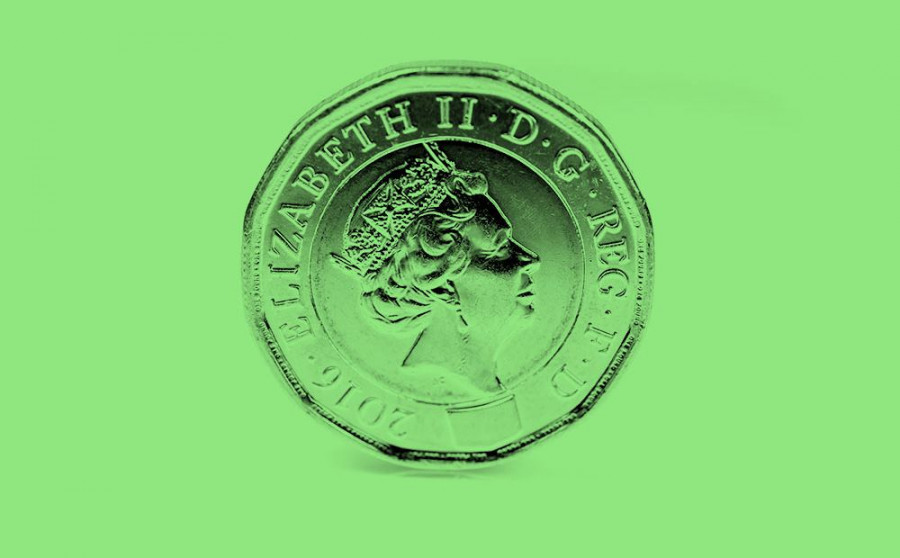The pound in the GBP/USD pair is steadily moving upward, updating local price highs. On Wednesday, the pair has approached the boundaries of the 1.36 area, whereas as recently as Monday, the price was testing the 1.33 area, marking a low at 1.3398.
This price dynamic is driven not only by the weakening U.S. currency but also by the strengthening of the pound, which responded positively to the UK labor market report. The dollar, in turn, is losing value due to heightened dovish expectations following the release of mixed CPI growth data. Thanks to this combination, GBP/USD has risen by more than 200 points.
Interestingly, the UK labor market data also turned out to be quite mixed, yet the market interpreted the release in favor of the British currency.
In June, unemployment remained at the previous month's level of 4.7%. This is a multi-year high — the highest reading since July 2021. Average annual wage growth was 5.0% (excluding bonuses) and 4.6% including bonuses. The number of unemployment benefit claims fell by 6,200 in July, while most analysts had forecast an increase of 20,000. The indicator moved into negative territory for the first time since April this year.
As we can see, the report was, to put it mildly, ambiguous. So why did market participants interpret it in favor of the pound? In my opinion, there are several reasons for this.
First, the high wage growth figure. As noted above, regular wages (excluding bonuses) rose by 5.0% year-on-year, which is above the "neutral" level of 3% (the level the Bank of England considers consistent with 2% inflation). The June result means that employers are still forced to pay more to attract or retain workers. Wage growth, in turn, maintains inflationary pressure, especially in the services sector.
Second, the decline in the Claimant Count played in favor of the pound. Despite unemployment being at multi-year highs, the change in unemployment benefit claims dropped into negative territory (-6,800). This points to limited layoffs and relative resilience in labor demand. Moreover, this component of the report offset the negative perception of the other elements.
It's important to remember that the possibility of a BoE rate cut during the July meeting was very uncertain. Contrary to the predictions of most analysts, four members of the Monetary Policy Committee chose to adopt a wait-and-see approach. The fate of the 25-basis-point cut was decided by just one vote, which went to the dovish camp.
The central bank also revised its one-year-ahead CPI growth forecast upward to 2.7% (previously 2.4%). At the same time, the central bank used somewhat cautious language in its accompanying statement when assessing the prospects for further rate cuts, stating that Committee members are "committed to a gradual and cautious approach."
Most importantly, in its final communique, the central bank stressed that it would "closely monitor the extent to which wage growth impacts consumer inflation." Given that the wage growth figure has again come in at 5% (as in the previous month), it is reasonable to say that at upcoming meetings, the BoE will likely keep rates unchanged. Not long ago, the market was almost certain that the central bank would implement two rate cuts by the end of the year — in August and (approximately) in November. Today, the probability of a November cut has fallen to minimal levels, nearly to zero.
However, one more piece of the puzzle is needed for a complete picture — the UK GDP growth report, which will be published on August 14.
According to preliminary forecasts, the UK economy in June is expected to accelerate to 1.1% after growing by 0.7% in the previous month. In the second quarter, GDP should rise by 1.0% year-on-year, after a 1.3% increase in the first quarter.
Even if the report meets the forecast (let alone exceeds it), the pound will receive additional — and quite significant — support.
From a technical perspective, on the four-hour chart, the pair is testing the upper line of the Bollinger Bands indicator, which corresponds to the 1.3580 level. Meanwhile, the Ichimoku indicator on H4 has formed a bullish "Parade of Lines" signal, indicating a preference for long positions. On the daily chart, the pair is trading between the middle and upper Bollinger Bands lines, above the Tenkan-sen and Kijun-sen lines, but within the Kumo cloud. The nearest target for the northern movement is 1.3620 (the upper boundary of the Kumo cloud, coinciding with the upper Bollinger Bands line on D1). The main target is 1.3750 (the upper Bollinger Bands line on W1), though it is too early to speak confidently about reaching this price level.













